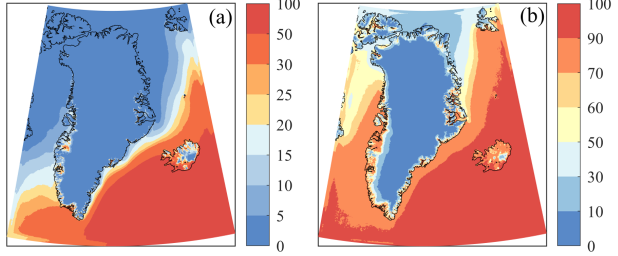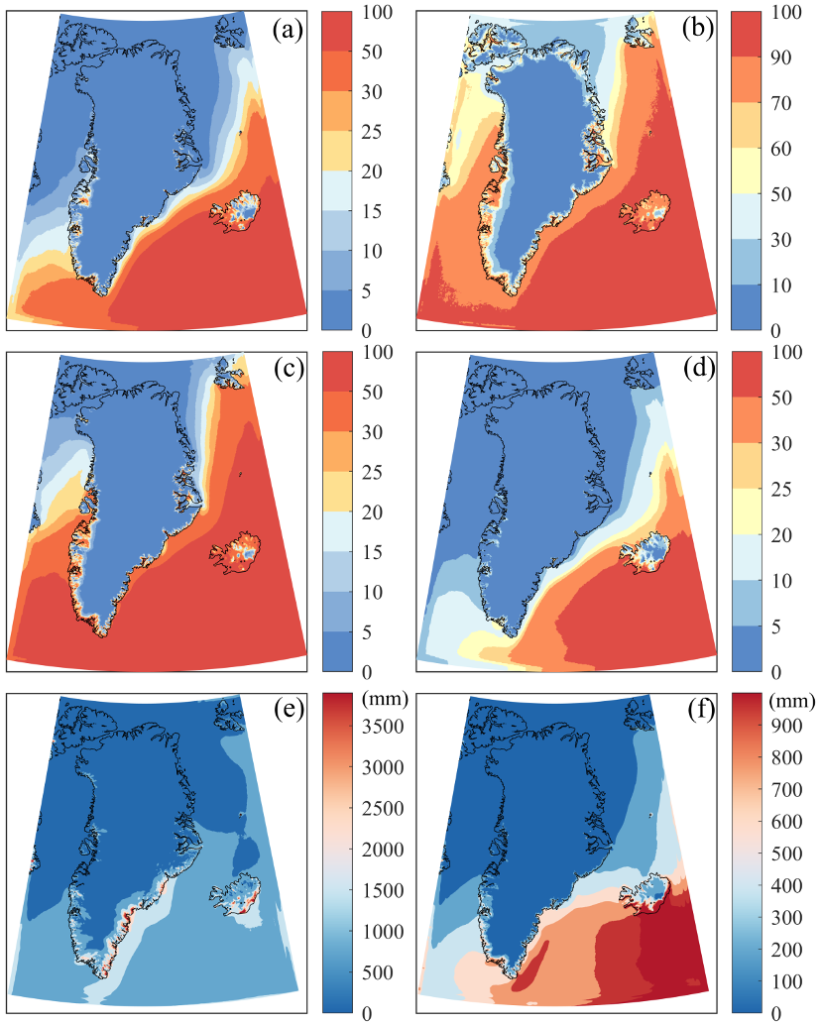
The article “Quantifying Rainfall in Greenland: A Combined Observational and Modeling Approach” was published in the Journal of Applied Meteorology and Climatology.
Here are the main results:
- A comprehensive understanding of precipitation rate and phase in Greenland is not only relevant to understand the current climatology, but also the future mass balance of the GrIS. This paper estimates rainfall totals at 17 Greenland meteorological stations, subjecting data from in-situ precipitation gauge measurements to seven different precipitation phase schemes to separate rain- and snowfall amounts, and then compared with the regional climate model RACMO2.3.

- With observations rainfall fraction ranging from 5% to 57% for cumulative totals, rainfall accounts for aconsiderable fraction of total annual precipitation over Greenland’s coastal regions, with the highest rain fraction in the south (Narsarsuaq).

- With a horizontal resolution of 5.5 km and simulation period from 1958-present, RACMO2.3 therefore is a useful tool to study spatial and temporal variability of rainfall in Greenland, although further statistical downscaling may be required to resolve the steep rainfall gradients.


Leave a Reply